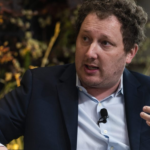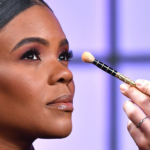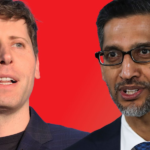Garfield is based in New York and has decades of experience in corporate strategy, shareholder value creation, and the commercial side of the global consulting business. Hornby is based in the UK and spends 30% of his time in New York. He has a soup-to-nuts background in AI, digital innovation, and both startup and global operating environments and previously led the firm’s Europe, Middle East, and Africa region. At the same time, both understand the tech and commercial sides and have a solid decade and a half of working together under their belts.
“We’re co-responsible for everything,” Hornby said. “So we share responsibility for all outcomes for everything. But that doesn’t mean that we are equally involved in everything—because we have different expertise.”
They operate under a single umbrella of “pre-planned forgiveness,” so if Hornby makes a decision that Garfield wouldn’t have made during the time they aren’t overlapping, there’s no harm done. The same is true for Hornby.
“Then there are some things we just have to say, ‘That’s too big. That’s something we need to talk about,’” said Hornby. “And we will reserve the right to take that offline, speak to each other and come back to whoever is asking for a decision.”
That conversation always involves active listening, said Garfield. At this point, they trust each other enough not to lobby based on preconceived notions but instead they get each other’s perspectives on the table.
“Ironically, I think it gets us to the answer faster because we don’t have to spend time building up a case,” said Garfield. “Having shared values makes a huge difference and having a foundation of trust makes a huge difference.”
Part of the reason it’s been so unpopular historically is that “a lot can go wrong,” noted Sandlund.
“It’s very much like a marriage,” Cole said. “It takes a lot of communication to make it work.” And just like a marriage, sometimes outside offers are too appealing to pass up.
“They’re always going to be drawn to other sole CEO opportunities,” he said, which is another reason co-CEO-ship doesn’t often last, in his view. He’s skeptical about the recent appointments, noting that some look like short-term solutions to problems that have emerged in succession plans. Sometimes boards have difficulty making a decision, or executives might be lured elsewhere, he said. “These just don’t seem like long-term solutions,” said Cole.
“I’ve seen people who, when they became CEO, they’ve changed,” said Gray, co-head of Egon Zehnder’s North American board and CEO practice. “When you have two people sharing power, you don’t always know how they’ll react to being that type of structure.”
Gray observed that defining “equal” in a co-CEO relationship is nearly impossible. “Is it equal number of direct reports? Is it equal size P&Ls? Is it the same size office?” he said. “One line of business is bigger than the other, one has responsibility for all the P&Ls and all the corporate functions—will they feel equal?”
Gray noted a board member once requested that he stop her immediately if the board ever considered a co-CEO leadership structure ever again.
Still, the CEO role itself may be driving renewed interest in power sharing and Gray said his firm plans to research splitting CEO roles in more depth. He’s been telling clients recently that “we’ve gotten to a point now where the CEO job is almost an impossible job for one human to have.” In board searches, CEOs have been asking for independent corporate directors to be sitting CEOs who have dealt with the ongoing disruptions since the fall of 2019.
“Wehn I talk to a lot of CEOs, you can just see the stress and the strain,” Gray said. In theory, if you can share some of the burden with someone, the job could be more sustainable, he said. Plus, a lot of CEOs say—and Gray noted this was a cliche—but CEOs say they’re lonely. Having another person could lessen the load, he said.
The key is having distinctly different roles, complementary skills, shared values, clear decision making rights, and genuine trust, experts agreed. More importantly, both people have to actually want to share the role, which is a trait that doesn’t always align with personalities drawn to being a CEO.
“It takes a very mature person,” said Sandlund. “Certain CEOs today, no way in hell would they be able to share power. Some days one will shine and the other can’t get their nose bent out of shape over it… You are truly sharing the limelight and have to be OK with that.”
Back at AlixPartners, Garfield and Hornby both said they’re OK with it. Garfield noted it’s not right for every company culture, but two people can have a wider range if they have the right chemistry and match. “I think the demands on a modern CEO are close to unsustainable,” said Hornby. “If you’re a singular CEO, I think it’s a pretty tough job nowadays. Co-CEOs, if you can meet the conditions of trust and relationship, just provides you with a lot more bandwidth to deal with a complicated world.”









